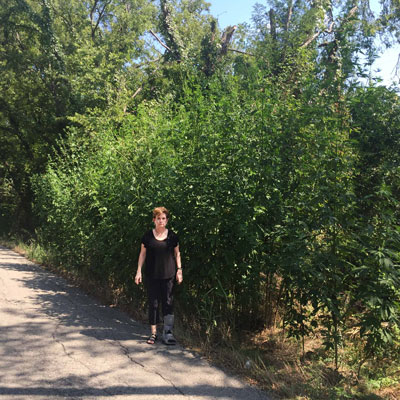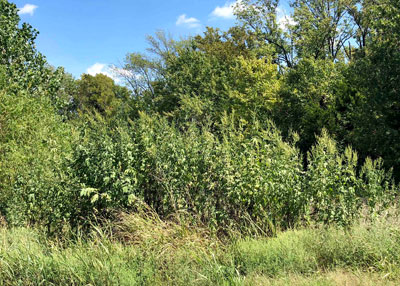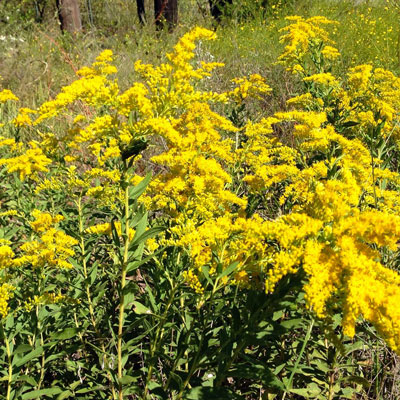Ragweed: Ah…Ah…Ah…Boo!
You could drive by this weed all day and never pay much attention. That’s not because it’s hiding. Far from it. Given enough moisture (as in ditches and along streams) it can grow really tall.

And not only can ragweed grow tall, it can also grow in masses. It’s not uncommon to see stands of it at the edges of woodlands 20 feet deep and a quarter mile long in the eastern half of the state. That’s a lotta pollen! A couple of swipes with a tractor and mower could wipe all that out in late summer, but there’s just so much of it.

But if you know what it looks like at least you can give it a wide berth when you’re out in nature. You don’t have to throw down your blanket or pitch your tent right in the middle of it if you look at this photo of its flowers and study its leaves.

Why does ragweed cause the bad allergies?
So what makes ragweed so sneezerific? Simply because it is pollinated by wind. Its pollen, like that of oaks, pecans, cedars, and grasses, is carried for miles by wind. It’s really a very efficient way for tiny pollen grains to be transported. Bees don’t have to be bothered. All it takes is a gentle breeze and your allergies are put on alert.
Goldenrod gets a bunch of bad blame…

In a few weeks you’ll be seeing goldenrod come into bloom. People who have been wheezing around town will start complaining that it’s the source of their troubles, but if they’d pause to look a bit closer they’d find that the flowers are covered with honeybees.
So therein lies the clue. Goldenrod pollen is sticky and heavy – it’s not carried by wind. Goldenrod does not cause allergies. It just has the misfortune of blooming at the same time as ragweed, so it’s guilt by association.
Enjoy the goldenrod. Rip out the ragweed.
